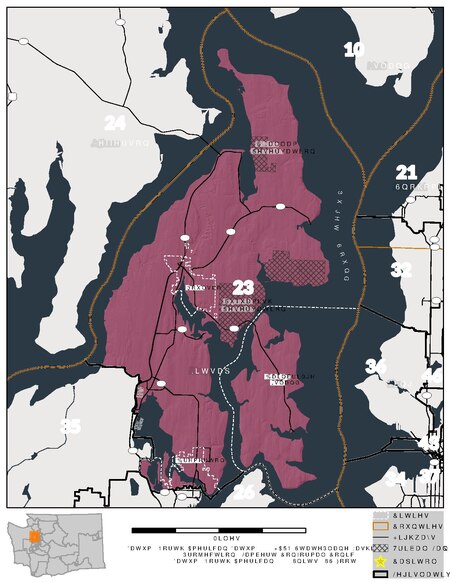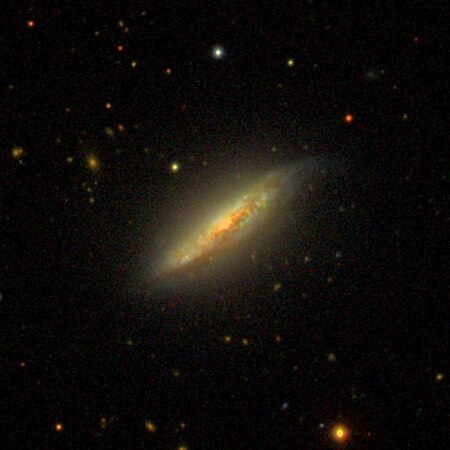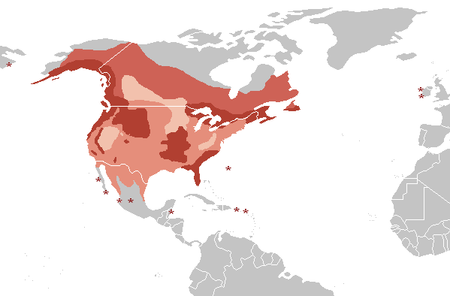Emotional literacy
|
Read other articles:

Protected area in Nevada, United States High Rock LakeIUCN category Ib (wilderness area)[1]BLM map of the Black Rock-High Rock NCA and 10 wilderness areas including High Rock Lake Wildernesslocation of High Rock Lake Wilderness in Nevada[2]Show map of NevadaLocation in United StatesShow map of the United StatesLocationBlack Rock Desert, Nevada, United StatesCoordinates41┬░12ŌĆ▓53.629ŌĆ│N 119┬░13ŌĆ▓19.665ŌĆ│W / 41.21489694┬░N 119.22212917┬░W / 41.21489694; …

2021 American drama television series Our Kind of PeopleGenre Drama Created byKarin Gist and Wendy CalhounInspired byOur Kind of People: Inside America's Black Upper Classby Lawrence Otis GrahamStarring Yaya DaCosta Nadine Ellis Lance Gross Rhyon Nicole Brown Alana Kaya Bright Kyle Bary Joe Morton Morris Chestnut Opening themeAntonio ChauletComposerMeshell NdegeocelloCountry of originUnited StatesOriginal languageEnglishNo. of seasons1No. of episodes12ProductionExecutive producers Aaron Harberts…

Ergosterol Names IUPAC name (22E)-Ergosta-5,7,22-trien-3╬▓-ol Systematic IUPAC name (1R,3aR,7S,9aR,9bS,11aR)-1-[(2R,3E,5R)-5,6-Dimethylhept-3-en-2-yl]-7-hydroxy-9a,11a-dimethyl-2,3,3a,6,7,8,9,9a,9b,10,11,11a-dodecahydro-1H-cyclopenta[a]phenanthren-7-ol Identifiers CAS Number 57-87-4 Y 3D model (JSmol) Interactive image ChEBI CHEBI:16933 Y ChEMBL ChEMBL1232562 N ChemSpider 392539 Y ECHA InfoCard 100.000.320 EC Number 200-352-7 MeSH Ergosterol PubChem CID 444679 UNII Z30RAY509F…

Part of a series on theCulture of Italy History Citizenship Currency and coinage Economy Fashion Flags Genetic Historic states Judaism LGBT Military Music Name Postage Railway People Languages Italian Arb├½resh Algherese Slavomolisano Aostan French Friulian Gallo-Italic of Sicily Italian Germanic Griko Ladin Occitan Romani Sardinian Slovene Wenzhounese Traditions Mythology and folklore Folk dance Folk music Cuisine Abruzzese Apulian Arb├½resh├½ Corsican Ligurian Lombard Mantuan Lucanian Neapolit…

This article relies largely or entirely on a single source. Relevant discussion may be found on the talk page. Please help improve this article by introducing citations to additional sources.Find sources: List of Hindi films of 1996 ŌĆō news ┬Ę newspapers ┬Ę books ┬Ę scholar ┬Ę JSTOR (February 2024) Hindi cinema 1920s 1920 1921 1922 1923 19241925 1926 1927 1928 1929 1930s 1930 1931 1932 1933 19341935 1936 1937 1938 1939 1940s 1940 1941 1942 1943 19441945 1946 1…

Abul ╩┐Ala Al-Ma╩┐arriLahirDesember 973 MMa'arrat al-Nu'man, Hamdanid, AleppoMeninggalMei 1058 MMaarrat al-Nu'man, Mirdasid, AleppoKebangsaanArabKarya terkenalSaqt al-Zand, Risalah al-GufranEraMasa Keemasan IslamKawasanFilsafat Timur TengahAliranFilosofi IslamMinat utamaSkeptisme, Rasionalisme, Asketisme, PesimismeGagasan pentingSyair, Rasionalisme, Pesimisme, Etika, Skeptisisme, Veganisme Dipengaruhi Ibn al-Rawandi Memengaruhi Turan Dursun Abu al-╩┐Ala Al-Ma╩┐arri (Arab žŻž©┘ł ž¦┘äž╣┘…

Zirconium(IV) sulfate Names Other names zirconium disulfate Identifiers CAS Number 14644-61-2 Y111378-69-9 N7446-31-3 (tetrahydrate) Y 3D model (JSmol) Interactive image ECHA InfoCard 100.035.162 PubChem CID 16213785 RTECS number ZH9100000 UNII 01SJA33642 YOS8L03QU95 (tetrahydrate) Y CompTox Dashboard (EPA) DTXSID0021466 InChI InChI=1S/2H2O4S.Zr/c2*1-5(2,3)4;/h2*(H2,1,2,3,4);/q;;+4/p-4Key: ZXAUZSQITFJWPS-UHFFFAOYSA-J SMILES [O-]S(=O)(=O)[O-].[O-]S(=O)(=O)[…

2017 film You can help expand this article with text translated from the corresponding article in Finnish. (June 2023) Click [show] for important translation instructions. Machine translation, like DeepL or Google Translate, is a useful starting point for translations, but translators must revise errors as necessary and confirm that the translation is accurate, rather than simply copy-pasting machine-translated text into the English Wikipedia. Do not translate text that appears unreliable o…

For the genus of dipodoid rodents in the Dipodidae (jerboa) family, see Jaculus (rodent). The jaculus (or iaculus, pl. jaculi, meaning thrown in Latin) is a small mythical serpent or dragon. It can be shown with wings and sometimes has front legs. It is also sometimes known as the javelin snake. In Greek mythology It was said that the jaculus hid in the trees and sprang out at its victims. The force of it launching itself at the victim led to the association with javelins.[1] Pliny descr…

A Gentleman: Sundar, Susheel, RiskySutradaraRaj Nidimoru, Krishna D.K.ProduserFox Star StudiosSkenarioRaj Nidimoru, Krishna D.K., Sumit BhatejaCeritaRaj Nidimoru, Krishna D.K.Sita MenonPemeranSidharth MalhotraJacqueline FernandezDarshan KumaarSuniel ShettyPenata musikSachin-JigarSinematograferRoman JakobiPenyuntingAarif SheikhPerusahaanproduksiFox Star StudiosDistributorFox Star StudiosTanggal rilis 25 Agustus 2017 (2017-08-25) Durasi132 menitNegaraIndiaBahasaHindiAnggaranŌé╣60crore&#…

┘éž▒ž¦ž▒ ┘ģž¼┘äž│ ž¦┘䞯┘ģ┘å 1644 ┘ģ┘āž¦┘å ž¦┘䞬┘üž¼┘Ŗž▒ žŁ┘Ŗž½ ž¬┘ģ ž¦ž║ž¬┘Ŗž¦┘ä ž▒┘ü┘Ŗ┘é ž¦┘䞣ž▒┘Ŗž▒┘Ŗ┘ģ┘āž¦┘å ž¦┘䞬┘üž¼┘Ŗž▒ žŁ┘Ŗž½ ž¬┘ģ ž¦ž║ž¬┘Ŗž¦┘ä ž▒┘ü┘Ŗ┘é ž¦┘䞣ž▒┘Ŗž▒┘Ŗ ž¦┘䞬ž¦ž▒┘Ŗž« 15 ž»┘Ŗž│┘ģž©ž▒ 2005 ž¦ž¼ž¬┘ģž¦ž╣ ž▒┘é┘ģ 5,329 ž¦┘äž▒┘ģž▓ S/RES/1644 (ž¦┘ä┘łž½┘Ŗ┘éž®) ž¦┘ä┘ģ┘łžČ┘łž╣ ž¦┘äž┤ž▒┘é ž¦┘䞯┘łž│žĘ ┘ģ┘äž«žĄ ž¦┘䞬žĄ┘ł┘Ŗž¬ 15 ┘ģžĄ┘łž¬ ┘䞥ž¦┘䞣┘䞦 žŻžŁž» ┘ģžĄ┘łž¬ žČž»┘䞦 žŻžŁž» ┘ģ┘ģž¬┘åž╣ ž¦┘ä┘垬┘Ŗž¼ž® ž¦ž╣ž¬┘ģž» ž¬┘ā┘ł┘Ŗ┘å ┘ģž¼┘äž│ ž¦┘䞯┘ģ┘å ž¦┘䞯ž╣žČž¦žĪ ž¦┘ä…

List of former tractor manufacturers This article needs additional citations for verification. Please help improve this article by adding citations to reliable sources. Unsourced material may be challenged and removed.Find sources: List of former tractor manufacturers ŌĆō news ┬Ę newspapers ┬Ę books ┬Ę scholar ┬Ę JSTOR (October 2020) (Learn how and when to remove this message) Agriculture History Prehistory Neolithic Revolution Agriculture in Mesoamerica Austro…

Washington's 23rd legislative district Washington's 23rd legislative district is one of forty-nine districts in Washington state for representation in the state legislature. The district includes northern Kitsap County and Bainbridge Island.[1] The district's legislators are state senator Drew Hansen and state representatives Tarra Simmons (position 1) and Greg Nance (position 2), all Democrats. See also Washington Redistricting Commission Washington State Legislature Washington State Se…

Viticultural area in Washington State, US Rattlesnake HillsWine regionTypeAmerican Viticultural AreaYear established2006[1]Years of wine industry56[2]CountryUnited StatesPart ofWashington, Columbia Valley AVA, Yakima Valley AVAOther regions in Washington, Columbia Valley AVA, Yakima Valley AVACandy Mountain AVA, Goose Gap AVA, Red Mountain AVA, Snipes Mountain AVAGrowing season2600-3000 GDD (10-yr avg)[1]Climate regionRegion IIPrecipitation (annual average)6ŌĆō12 in …

NGC 3683 ž¦┘ä┘ā┘ł┘āž©ž® ž¦┘äž»ž© ž¦┘䞯┘āž©ž▒[1] ž▒┘ģž▓ ž¦┘ä┘ü┘ćž▒ž│ NGC 3683 (ž¦┘ä┘ü┘ćž▒ž│ ž¦┘äž╣ž¦┘ģ ž¦┘äž¼ž»┘Ŗž»)PGC 35249 (┘ü┘ćž▒ž│ ž¦┘ä┘ģž¼ž▒ž¦ž¬ ž¦┘äž▒ž”┘Ŗž│┘Ŗž®)UGC 6458 (┘ü┘ćž▒ž│ žŻ┘łž©ž│ž¦┘䞦 ž¦┘äž╣ž¦┘ģ)2MASX J11273188+5652361 (Two Micron All-Sky Survey, Extended source catalogue)IRAS 11247+5709 (IRAS)MCG+10-16-143 (┘ü┘ćž▒ž│ ž¦┘ä┘ģž¼ž▒ž¦ž¬ ž¦┘ä┘ģ┘łž▒┘ł┘ü┘ł┘ä┘łž¼┘Ŗ)IRAS F11246+5709 (IRAS)IRAS 1124+571P15 (IRAS)PSCz Q11247+5709 (┘āž¬ž¦┘ä┘łž¼ PSCz)SDSS J112731.84+5652…

Bird of prey species of North America For other uses, see Bald eagle (disambiguation). American eagle redirects here. For other uses, see American eagle (disambiguation). Bald eagleTemporal range: Pleistocene-Recent 0.3ŌĆō0 Ma[1] PreĻ×Æ Ļ×Æ O S D C P T J K Pg N ↓ Bald eagle preparing to fly at Kachemak Bay in Alaska, United States A recording of a bald eagle at Yellowstone National Park Conservation status Least Concern (IUCN 3.1)[2] CITES Appendix II (CITES…

Stolpersteine in Lingenau Die Liste der Stolpersteine in Vorarlberg enth├żlt die Stolpersteine im ├Čsterreichischen Bundesland Vorarlberg, die an das Schicksal der Menschen erinnern, die von den Nationalsozialisten in Vorarlberg ermordet, deportiert, vertrieben oder in den Suizid getrieben wurden. Die Stolpersteine wurden von Gunter Demnig verlegt. Inhaltsverzeichnis 1 Widmungen 2 Verlegte Stolpersteine 2.1 Fraxern 2.2 G├Čfis 2.3 Hohenems 2.4 Lingenau 3 Verlegedaten 4 Quellen 5 Weblinks 6 Einzel…

1938 New Zealand general election ← 1935 14 (M─üori) & 15 October (general) 1938 1943 → elected members →All 80 seats in the New Zealand Parliament 41 seats were needed for a majority First party Second party Leader Michael Joseph Savage Adam Hamilton Party Labour National Leader since 12 October 1933 31 October 1936 Leader's seat Auckland West Wallace Last election 53 seats, 45.7% 19 seats, 32.9% (as UnitedŌĆōReform Coalitio…

Mountain in New York, United States This article is about the mountain in New York. For other uses, see Whiteface (disambiguation). Whiteface MountainWhiteface MountainHighest pointElevation4,867 ft (1,483 m) NGVD 29[1]Listing#5 Adirondack High Peaks[2]Coordinates44┬░21ŌĆ▓57ŌĆ│N 73┬░54ŌĆ▓10ŌĆ│W / 44.36583┬░N 73.90278┬░W / 44.36583; -73.90278[3]GeographyWhiteface MountainLocation of Whiteface, northeast of Lake PlacidShow ma…

µŁżµóØńø«ń┐╗ĶŁ»ÕōüĶ│¬õĖŹõĮ│ŃĆé (2021Õ╣┤9µ£ł13µŚź)ń┐╗ĶŁ»ĶĆģÕÅ»ĶāĮõĖŹń夵éēõĖŁµ¢ćµł¢ÕĤµ¢ćĶ¬×Ķ©Ć’╝īõ╣¤ÕÅ»ĶāĮõĮ┐ńö©õ║åµ®¤ÕÖ©ń┐╗ĶŁ»ŃĆéĶ½ŗÕŹöÕŖ®ń┐╗ĶŁ»µ£¼µóØńø«µł¢ķ揵¢░ńĘ©Õ»½’╝īÕ╣ȵ│©µäÅķü┐ÕģŹń┐╗Ķ»æĶģöńÜäķŚ«ķóśŃĆ鵜ÄķĪ»µŗÖÕŖŻńÜäń┐╗ĶŁ»Ķ½ŗµö╣µÄø{{d|G13}}µÅÉõ║żÕł¬ķÖżŃĆé Õ¢¼µ▓╗┬ʵ¤»µ×ŚķĀōGeorge Clintonń¼¼4õ╗╗ńŠÄÕøĮÕē»µĆ╗ń╗¤õ╗╗µ£¤1805Õ╣┤3µ£ł4µŚźŌĆö1812Õ╣┤4µ£ł20µŚź µĆ╗ń╗¤µēśķ®¼µ¢»┬ʵØ░µ¢ÉķĆŖĶ®╣զ嵢»┬Ęķ║”Ķ┐¬ķĆŖÕēŹõ╗╗ķś┐ķŠÖ┬Ęõ╝»Õ░öń╗¦õ╗╗Õ¤āÕ░öÕĖāķćīÕźć┬ʵĀ╝ķćī ń¼¼3õ╗╗ń┤Éń┤äÕĘ×ÕĘ×ķĢĘõ╗╗µ£¤1801Õ╣┤4µ£ł1µŚ…

